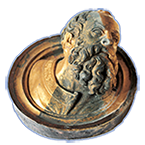Speaker
Description
Prompt gamma activation analysis (PGAA) and in-beam neutron activation analysis (in-beam NAA) offer a non-destructive panoramic analysis with fair detection limits for many elements. Non-destructivity is of extreme importance in archaeometry and cultural heritage research. Due to the low matrix dependence, many different object types can be analyzed – e.g. coins, stone artefacts and glasses. At the PGAA instrument of MLZ, the current research in this field focuses on provenance analysis of archaeological findings, investigation of the production methods of ancient objects, conservation-restoration research and reverse engineering of ancient aqueduct systems. The instrument makes possible the combination of different techniques. PGAA and in-beam NAA are complementary for the determination of several elements, so that the combination increases the number of analyzed elements which is important for provenance analysis. A cold-neutron tomography setup provides additional information about the internal structure of small objects and with prompt gamma activation imaging (PGAI) one can perform spatial resolved PGAA. We will present an overview about our current projects and the possibilities of the PGAA facility in archaeometry and cultural heritage research.

